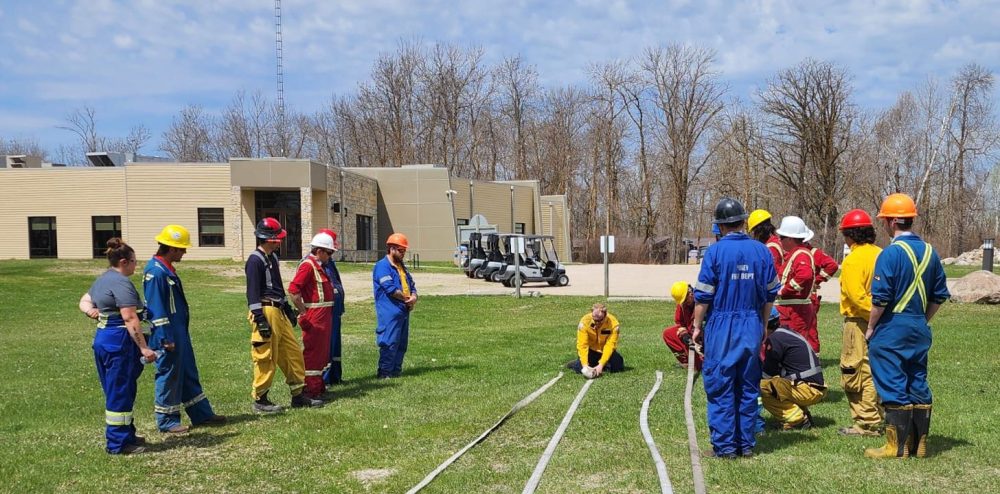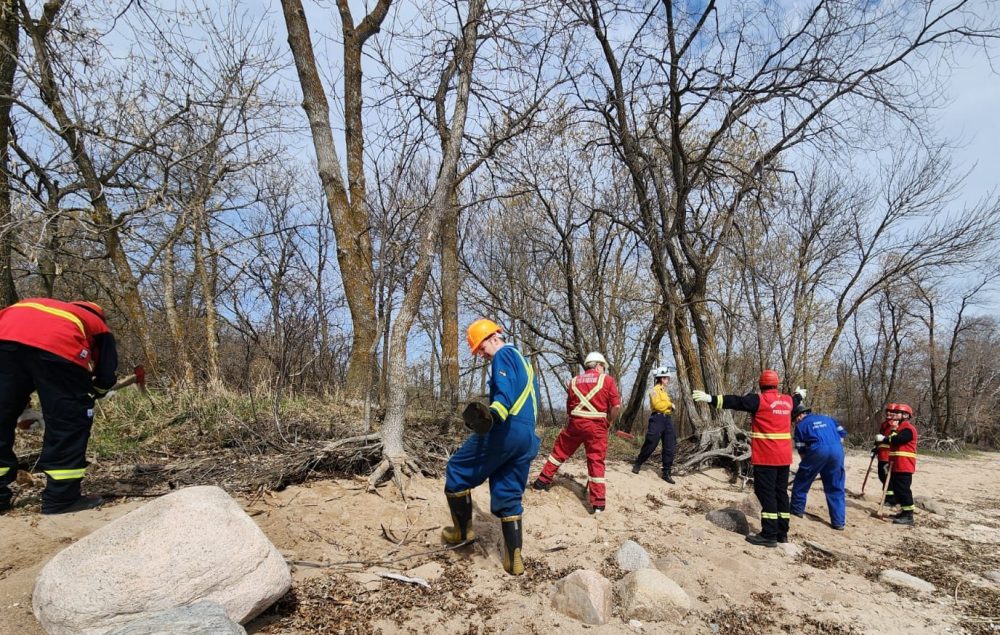Federal grant trained 60 firefighters to combat wildfires in Piney, Buffalo Point
Advertisement
This wildfire season has hit the province hard with 428 wildfires this year burning 2.14 million hectares of forest. One of those fires was in the RM of Piney where more than 9,000 hectares of forest was burned this spring and caused the displacement of 300 residents. Now, the federal government is helping to combat wildfires in Piney with a $204,500 grant.
“We’ve been working on this project since 2023 – the program announcement. The news releases has just come out. But already back in 2024 the municipality was aware that we were the recipient of the grant and we had started the process of formalizing the agreement with the federal government. It was for three-year funding terms to train 50 to 60 volunteer firefighters within the region,” said Piney CAO Martin Van Osch.
The money is coming out of the government’s fighting and managing wildfires in a changing climate program (FMWCC) training fund, which will see $28 million spent to 2027 to train 2,800 new community-based firefighters and reduce the risk of wildland fires across Canada.

“These fires are a direct and growing consequence of climate change — becoming more frequent, more intense and more destructive every year. That’s why strengthening local firefighting capacity is essential to protecting the places we call home,” said Julie Dabrusin, minister of environment and climate change.
The FMWCC training grant has already been used to train firefighters in Piney and Buffalo Point First Nation. That training will continue this October to deliver chainsaw training and into the spring of 2026 when 25 firefighters will receive more training.
Van Osch said while firefighters are trained for wildland fires, the majority of training they receive is for structural fires. This grant will get the firefighters certified in wildland training Type 3 so that they may work with the province on wildland fires in the future.
Piney spends about $335,000 to train its firefighters and for specialized training for this year that total is around $50,000.
Mutual aid agreements between Piney and Buffalo Point exist and Buffalo Point helped in the May fire this spring that saw the evacuation of Carrick, Badger, St Labre, and Woodridge.

“The 25 members that were involved with the (FMWCC) training were able to put their training to use immediately,” said Van Osch.
Van Osch said increased human activity in the pine forests of Piney have led to some fires. He noted that there are trees that are 80 to 100 years old and have never been subjected to a fire, but that there are sections of the forest that have burned three times in the last 15 years. This has prevented the trees from maturing and growing pinecones, which are essential to rejuvenation after a forest fire. Because the trees are not able to mature, the areas are becoming grasslands and add to the mix of long, hot, and dry springs and summers creating a recipe for a wildland fire.
“Forests tend to retain moisture down to the ground because they have a canopy above, whereas grasslands tend to dry out quickly and winds can move fire along in grasslands very rapidly. Our risk hasn’t diminished, it’s just simply changed,” said Van Osch.
The fire chief at Buffalo Point was contacted by The Carillon but did not return calls by press time.

